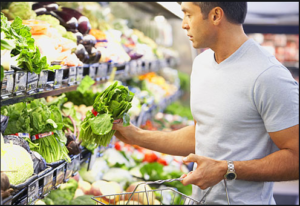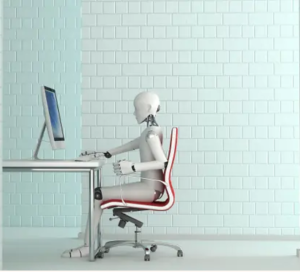I hate shopping. But I also hate that so much of retail shopping has been reduced to sitting at home, punching keyboards, and waiting (invariably for Amazon) to deliver orders in a … swoosh. And don’t get me started on the way this transformation has rendered neighborhood stores desolate memories on main streets all over America.
 The point is that I derived a little consolation from going to Whole Foods early on Sundays to do my own food shopping. The experience was always wholesome because:
The point is that I derived a little consolation from going to Whole Foods early on Sundays to do my own food shopping. The experience was always wholesome because:
- I could browse the aisles at leisure without fear of annoying anyone else; and
- there were just enough like-minded shoppers to reinforce neighborliness.
But now Amazon owns Whole Foods. Therefore, I probably should have known it was only a matter of time before it turned grocery shopping into the solitary, anti-social, and misanthropic experience shopping for almost everything else has become.
Sure enough, I began noticing recently that my Sunday morning ritual was becoming more like window shopping down Fifth Avenue – with all the hustle and bustle that entails. Because all kinds of “out-of-towners” were now darting by and around me, ignoring my quaint attempts to say “good morning.”
They were simply too focused on the tablets they were carrying in one hand while pushing their trollies with the other to notice me. Yet I marveled at the robotic way they would stop on a dime, reach for an item, toss it into the trolley, and move on – at speeds which give the impression they’re all competing against each other … or time. Incidentally, chances are their Instacart compadres have bumped into you at your local grocery store …
Alas, I seem to be among a dying breed of human beings still shopping the old-fashioned way. Because I now know that 90 percent of those fellow early birds are Amazon’s gig-shoppers, fulfilling orders for Prime Now shoppers who are probably still fast asleep. Arguably, they are becoming to Whole Foods what migrant workers are to Dole Foods.
More to the point, Amazon is turning erstwhile neighborly Whole Foods stores into little more than fulfillment centers – no doubt using these human robots only until engineers can program the real things to take over. But who wants to shop in a food store that operates like a friggin’ warehouse! There’s a reason why owners locate Costco, Sam’s Club, and other wholesalers on cheaper real estate outside city limits.
 And so it’s only a matter of time before I too am resigned (or reduced) to sitting at home, punching a keyboard, and waiting for Amazon to deliver my groceries … too.
And so it’s only a matter of time before I too am resigned (or reduced) to sitting at home, punching a keyboard, and waiting for Amazon to deliver my groceries … too.
We all know that relying on technology and home delivery for everything does not bode well. Yet, like sheep to the slaughter, we are blithely punching keyboards towards our fateful end.
In the meantime, we’re becoming so dehumanized, we’re living like zombified versions of the robots we’re programming to replace us. Hell, some of us already communicate more with Siri, Alexa, and other devices with emotional AI than we do with other human beings.
Which reminds me of a sobering but hopeful column I read in The Guardian a year ago. The title speaks volumes: “Wake up, humanity! A hi-tech dystopian future is not inevitable,” February 18, 2019. It includes this clarion, even if forlorn, call:
Technology isn’t just something that happens to us; it’s something we can decide to build and to use, or not.
Related commentaries:
Amazon’s Alexa…
